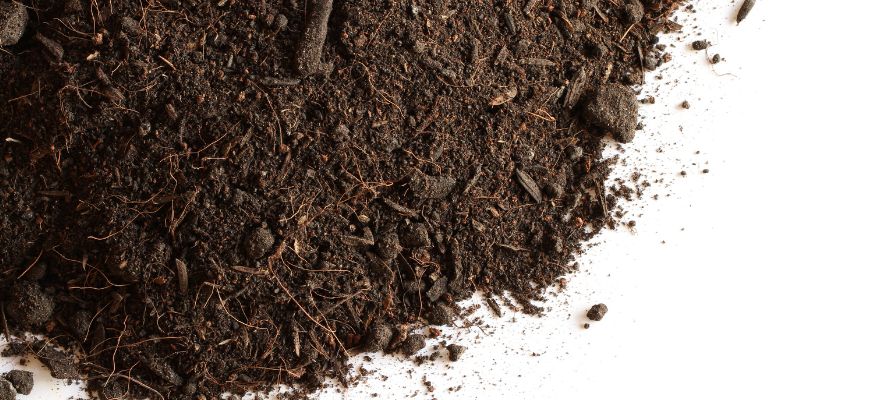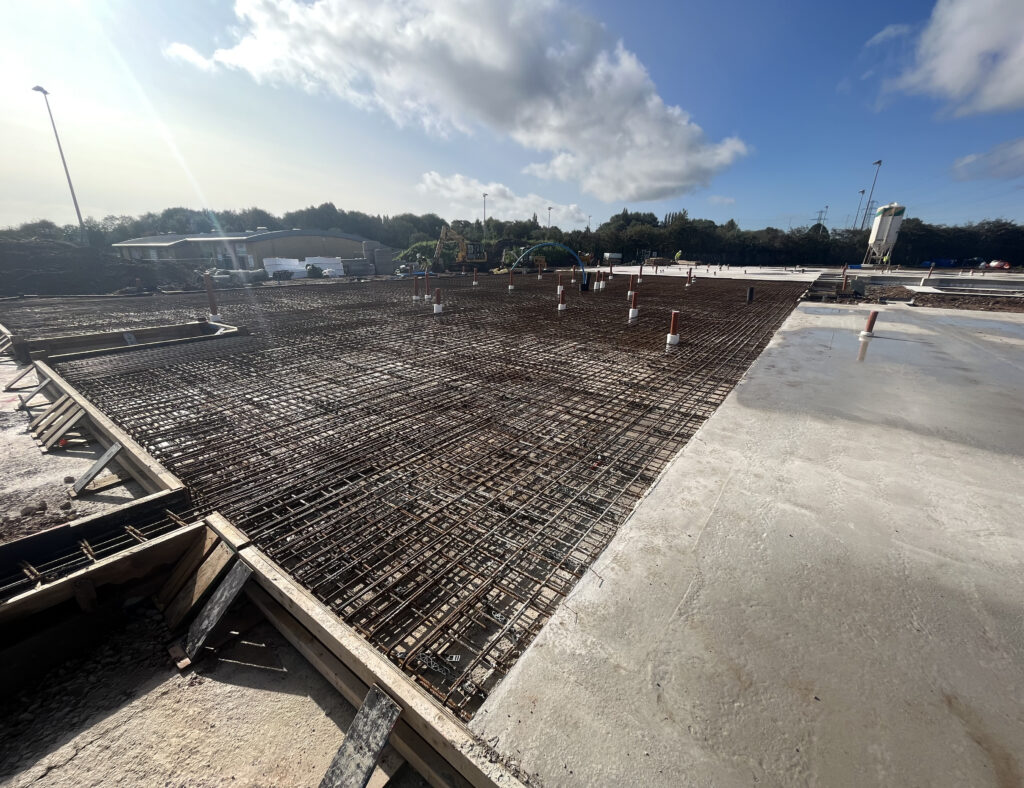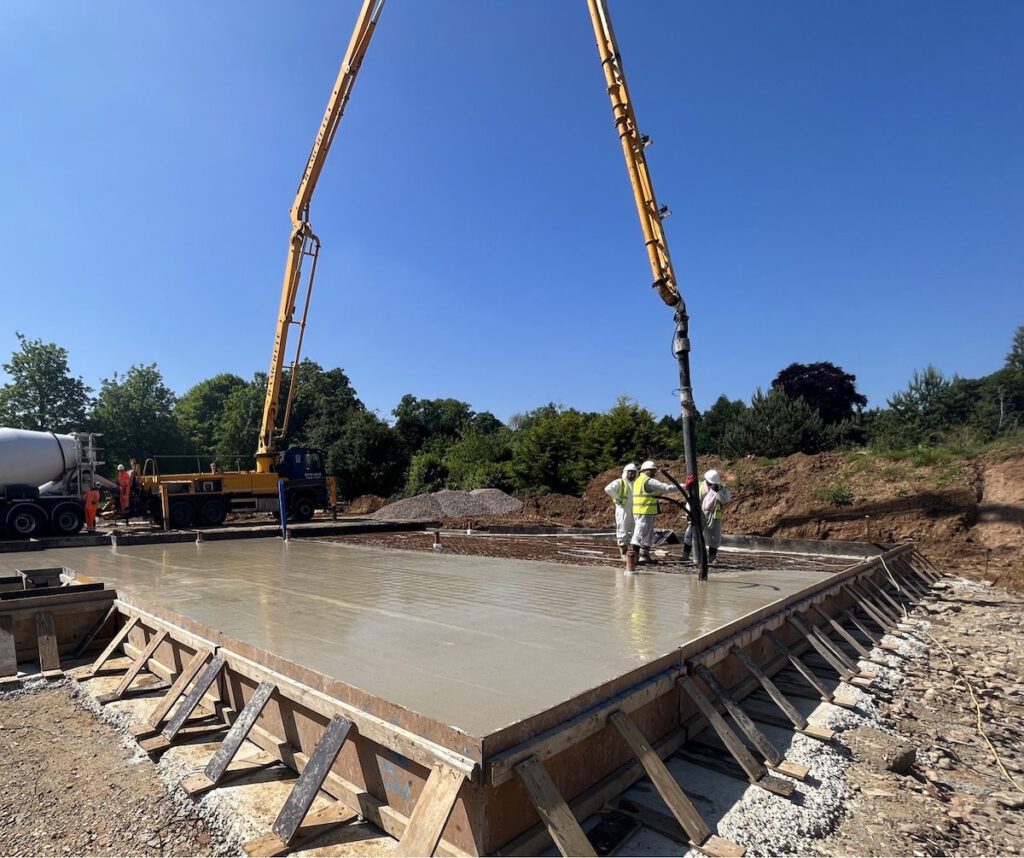But what exactly is Heave and how do you determine if there are any risks present at your site? In this article we’ll look into the various causes of Heave and discuss the methods needed for proper risk assessment in order to determine the potential issues Heave may cause.

Heave cracks in walls
What is Heave?
Heave is the upward motion instigated by the expansion and swelling of clay-rich soils. Such expansive soils are common across the UK, rendering a substantial challenge to construction projects.
Understanding the causes of Heave is crucial, as new infrastructure across the UK must take into account the risks associated with these expansive soils. Heave is a problem for building foundations, as the swelling soil imparts pressure to the underside of foundations, causing differential movement, which can damage the structure.
As Heave can threaten the safety of buildings it’s essential to take measures to prevent Heave in construction, such as the employment of specialised foundations contractors to understand and mitigate the effects of the soil’s tendencies.
Why does Heave occur?
Heave is typically the result of clay soils expanding due to an increase in moisture levels. Because of their mineralogy Clay is known as an ‘expansive soil’. This means that when it is wet it expands and when it becomes dry it shrinks. This distinctive property is termed shrink-swell and is found in specific clay-rich soils, such as the London Clay Formation, Weald Clay Formation, and Gault Clay Formation.
A myriad of factors can cause these changes in moisture content, such as seasonal changes in moisture (times of heavy rainfall or drier seasons), alterations to the site’s drainage or ability to remove excess water, and planting or removing trees and hedges can all play a role.
How do we determine if Heave will be an issue?
The key to avoiding Heave problems is to take a proactive approach and conduct thorough research before beginning any construction project. Geotechnical engineers and specialist foundations construction companies such as SPEEDECK can conduct soil analysis, assessing the soil’s composition and water-holding capacity based on a site investigation and lab testing.
Site investigation
Before any construction project can commence, a site investigation must be conducted. The site investigation is critical in providing information about the site’s subsurface conditions, characteristics, and risks – important factors in determining the type and scope of construction activities that can be safely undertaken.
In relation to soil conditions, the analysis of the report by SPEEDECK is essential in identifying any potential issues with Heave that may arise. For example, if the report indicates significant volumes of clay in the upper 3m of the soil profile, then it may be prone to Heave. This is just one of the many important factors that SPEEDECK considers when assessing site investigation reports.

Geotechnical assessments for site investigation and tree-influence zones
Laboratory testing
When it comes to analysing Heave potential, laboratory testing is critical. SPEEDECK can conduct a number of specific lab tests to understand the full composition and qualities of the soil in any given location, building a comprehensive picture of the potential for Heave and mitigate accordingly if found to truly be an issue.
Evaluating the Proportion of Fine Particles via Particle Size Distribution Analysis
The National House Building Council (NHBC) states soils demonstrating shrink/swell characteristics common with Heave possess in excess of 35% fine particles. We can ascertain the presence of such fine particles within the soil at a specific site with Particle Size Distribution (PSD) testing.

Particle Size Distribution (PSD) Graph
Particle Size Distribution testing is a method that segregates soil particles into their respective sizes, thereby enabling a precise measurement of the proportion of fine particles within the soil sample. The method not only discerns the relative distribution of different particle sizes but also ascertains the soil’s texture, which is pivotal in comprehending its overall behaviour and properties.
By conducting PSD testing, SPEEDECK can gain an in-depth insight into the soil’s structural composition, allowing for a more comprehensive understanding of its shrink/swell potential. This information is crucial for determining the soil’s suitability for construction and enables the implementation of tailored strategies to mitigate potential Heave risks associated with the presence of expansive soils.
Conducting Atterberg Limit Testing for Determination of the Plasticity Index
The Plasticity Index is a pivotal metric that provides insights into a soil’s behaviour across varied moisture content levels. Established guidelines suggest that soils exhibiting shrink/swell characteristics possess a Plasticity Index exceeding 10%. Essentially, the Plasticity Index precisely indicates the moisture content range where a soil undergoes plastic deformation.
To ascertain the Plasticity Index, soils are subjected to Atterberg Limit testing. This test gauges two parameters, the Liquid Limit and the Plastic Limit.
- The Liquid Limit is characterised as the minimal moisture content threshold at which the soil manifests liquid-like behaviour.
- The Plastic Limit is denoted as the moisture content below which the soil cannot be reworked without inducing cracks.
The difference between these two limits precisely defines the Plasticity Index.
Knowing the Plasticity Index, published tables categorise a soil’s Volume Change Potential, which quantifies the potential magnitude of soil shrinkage or swelling.
By understanding this potential, construction and geotechnical experts can make informed decisions in assessing Heave risk and determining appropriate solutions.
Moreover, analysing these tests with respect to the moisture content of the soil can also give valuable insight into whether a site’s soil is desiccated, as rehydration of a desiccated soil can be a major risk factor for Heave. Without laboratory testing, you could be overlooking crucial information that puts your project at risk.
Soil Moisture Deficit Assessment
If the shallow soils are found to be prone to heave due to higher fine content and demonstrable plasticity, soil moisture deficit can be reviewed in more detail to assess whether soils are desiccated and if Heave risk is likely. This involves detailed moisture content or soil suction testing with depth in control holes and at locations where desiccation is suspected. This can be used to develop a more comprehensive picture of the risk and where it occurs on site. This type of assessment is not always suitable or possible but if it is considered it may lead to a more economical solution, SPEEDECK can carry this out.

Housing near tree-influence zones
Building Near Trees
Building near trees provides beautiful and natural surroundings for any structure. However, it’s important to consider the potential impact that trees and hedges may have on the soil and therefore foundations of the buildings around them.
Roots from trees and hedges absorb moisture from the ground, which can lead to desiccation and shrinkage of the soil in areas where it’s shallow and cohesive.
This can cause problems in the future if the tree is removed or dies, as the desiccated clay may swell and heave. As the root network no longer draws water from the subsoil, water accumulates in the ground, resulting in swelling that can move building structures upwards.
It’s important to know the zone of influence each tree has on the soil, and SPEEDECK can help analyse arboricultural reports to determine the diameter of these zones.
If the structure is being built within a tree’s influence zone and shallow cohesive soils are present, Heave precautions may need to be implemented for the foundations.
In Conclusion
Natural elements can greatly impact the Heave forces of a particular site, and the key to understanding the ground conditions properly lies in conducting a thorough Site Investigation, surveying and testing. SPEEDECK are specialists in this crucial aspect of construction and go the extra mile in understanding the geotechnical parameters of the soils underlying a site and optimising the foundations around the features present, be they tree influence or soil based.
By determining which particular plots are under threat, as well as which plots are maybe not as much as risk as first thought, we can implement the most appropriate and effective solutions for the construction phase.
Our commitment to providing accurate and comprehensive analysis ensures that projects will be executed smoothly, efficiently, and with successful outcomes for our clients.






